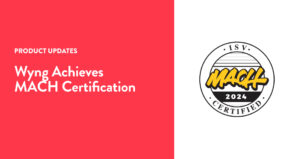A colleague in Canada sent me this one. I’m pretty sure everyone knows who Unilever is, or at least some of the world-famous products they make, like Dove soap and Ben and Jerry’s ice cream. They are one of the biggest consumer packaged goods (CPG) companies in the world, and they are one of the few companies in the world that does not sell any product directly to consumers. You can’t buy anything on Unilever.com. All you can do is sign up for a newsletter. But that’s where Unilever has made a brilliant choice with zero-party data.
Why does zero-party data work for them? The answer isn’t obvious, but it shows how any company can benefit from better knowing their customers. Let’s dig in.
After you sign up for Unilever’s newsletter, this quiz is delivered to you. The deal is simple: Unilever will send you coupons for your favorite products to be purchased from your favorite retailer (since Unilever doesn’t actually sell directly to consumers). Since most people open email on their phones, I’ll show you what that looks like with screenshots.
Building a Brand, One Happy Customer at a Time
I love this quiz because it’s an extremely smart win-win for Unilever and their customers. First, it addresses the No. 1 concern for their customers — getting a good deal on household necessities. For Unilever, it solves a big revenue tracking and marketing impact problem because they can use the personalized coupons to measure the effectiveness of the program! Unilever relies on in-store promo content (end-caps and displays), coupons in print, billboards and TV ads. Almost none of those marketing methods are trackable in the ways digital ads and ecommerce are. There’s no way to know if a TV ad actually got someone to purchase a Unilever product over another brand.
Unilever’s quiz, combined with individualized coupon codes, help the company figure out exactly what works for their customers! And over time, as you send more communications and gather more preferences, they will continually get better insights into their customers. It’s brilliant.
How It Works
A couple weeks after signing up for the newsletter, the quiz arrives in your inbox. The value to the customer is clear: You are going to get some coupons and exclusive, personalized offers!
At the beginning, they ask a few multi-select questions about food types – Are you looking for healthy options or different flavors? Then they want to know more about your shopping. These preferences are hugely beneficial to Unilever because, armed with the data, they can segment users, drive product innovation, and understand broader customer trends. Unilever makes a lot of products, but they don’t make individualized products. Each product has to serve a large group of customers, but the world has changed a lot since the days when there were only three or four types of toilet paper to choose from, and Unilever needs to understand how to beat the competition.
After the initial round of preferences, Unilever asks where users do their shopping.
Finally, they want to make sure they send the right content to the right person, and ask users to confirm their details.
What I Like
There’s a lot to love about this campaign beyond the data Unilever is collecting. Let’s talk about user experience. What I like about this particular experience is how well it’s optimized for mobile phones. It is a very simple design. The icons clearly represent the text. They’re not trying to be flashy, they’re trying to get some opinions quickly, before attention spans run out. This survey is good for busy parents who may not have time to closely read a survey – and parents are a key demographic for Unilever’s products.
Unilever did a great job with signposting how many questions are left in the survey. I know what to expect and how much work I am going to have to do, which makes it more likely that I will finish.
I also like that you get coupons instantly when you complete the survey. And those coupons are tailored for use either online or in-store, and they can be used from a mobile device without customers needing to download an app.
Finally, all the contact information at the end is really appreciated. They are going out of their way to be transparent for the users.
Next Steps/Improvements
For those repeat readers, this might sound like a familiar critique: I would love to see some content in the follow-up messaging. Unilever could use blogs or articles about how their company is innovating in areas I’ve already told them I’m interested in – as one example. Other examples include blogs about “10 Ways to Use Hellman’s You Need to Know” or something similar.
Another good touch would be if Unilever used my preferences to offer free samples of products I might like. That might happen in a later ZPD Experience, after they learn what brands I have and have not tried that suit my preferences.
Conclusion
The potential use cases for this preference data are huge for the brand. A majority of people are fine with sharing data with a brand — when the value makes sense to them. Since Unilever cannot actually personalize any of the experiences that people have without physical or digital stores of their own, using zero-party data to deliver personalized coupons, campaigns, and samples makes the most sense for their marketing dollars. In addition, the preference data of customers helps them drive product strategy and partnerships to increase overall revenue for the brand by being smarter with their marketing and innovation.
If you’d like to build your own quiz (or any other digital experience!) to start earning valuable preference data from your customers, try out Wyng for free today. Or, schedule a time to talk with someone from our team.













